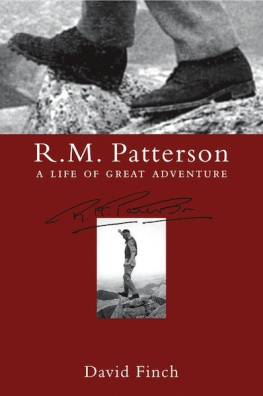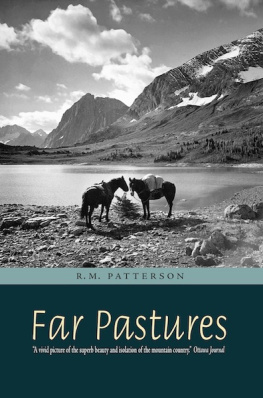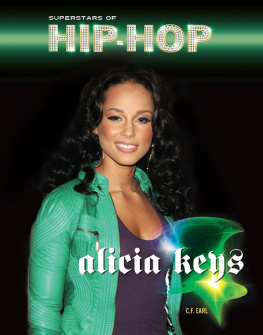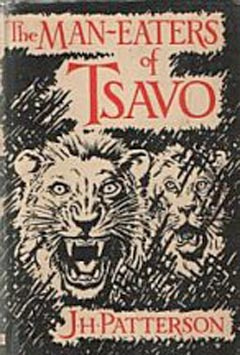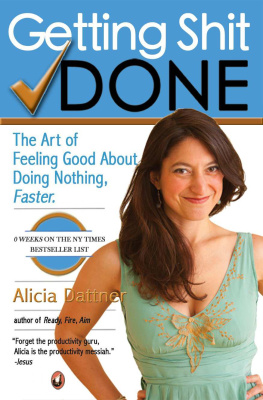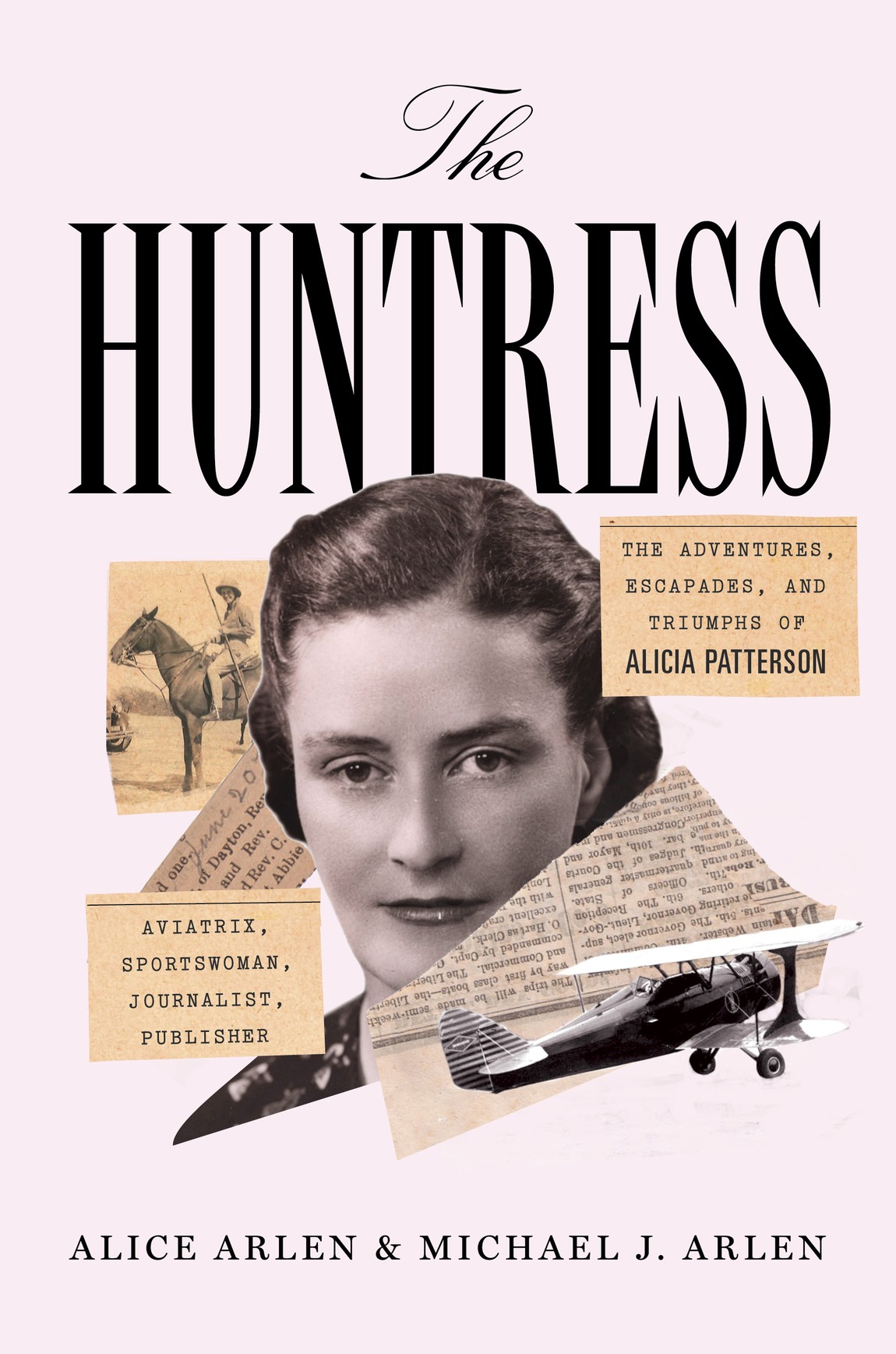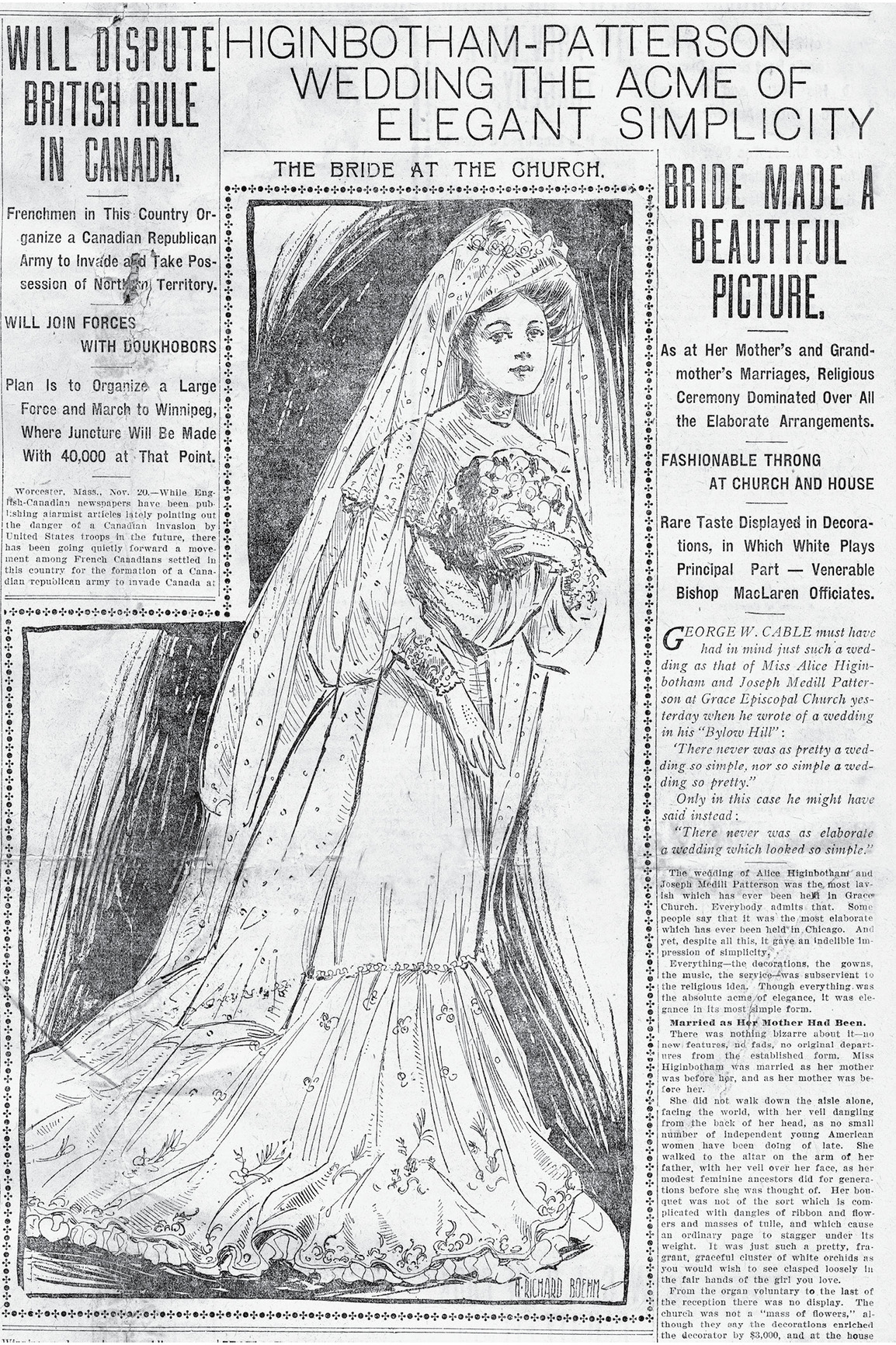ALSO BY MICHAEL J. ARLEN
Say Goodbye to Sam
The Camera Age
Thirty Seconds
The View from Highway 1
Passage to Ararat
Exiles
An American Verdict
Living-Room War
ALSO BY ALICE ARLEN
Cissy Patterson
Copyright 2016 by Alice Arlen and Michael J. Arlen
All rights reserved. Published in the United States by Pantheon Books, a division of Penguin Random House LLC, New York, and distributed in Canada by Random House of Canada, a division of Penguin Random House Canada Limited, Toronto.
Pantheon Books and colophon are registered trademarks of Penguin Random House LLC.
All of the images in this book are courtesy of a family collection, with exception of the article and photographs on , which is from Time magazine, September 23, 1954, copyright 1954 Time, Inc. Used under license.
Library of Congress Cataloging-in-Publication Data
Names: Arlen, Alice, 19402016. Arlen, Michael J.
Title: The huntress : the adventures, escapades, and triumphs of Alicia Patterson: aviatrix, sportswoman, journalist, publisher / Alice Arlen and Michael J. Arlen.
Description: New York : Pantheon, 2016.
Identifiers: LCCN 2015048178. ISBN 978-1-101-87113-3 (hardback). ISBN 978-1-101-87114-0 (ebook)
Subjects: LCSH: Patterson, Alicia, 19061963. Women publishersUnited StatesBiography. Women journalistsUnited StatesBiography. Newsday (Hempstead, N.Y.)History. Women air pilotsUnited StatesBiography. Women adventurersUnited StatesBiography. Horsemen and horsewomenUnited StatesBiography. BISAC: BIOGRAPHY & AUTOBIOGRAPHY/General. BIOGRAPHY & AUTOBIOGRAPHY/Editors, Journalists, Publishers. BIOGRAPHY & AUTOBIOGRAPHY/Women.
Classification: LCC CT 275. P 417 A 75 2016. DDC 070.5092/273dc23. LC record available at lccn.loc.gov/2015048178
ebook ISBN9781101871140
www.pantheonbooks.com
Cover images: Alicia Patterson, in 1943. Reproduced from Hofstra University Special Collections. All other photographs, courtesy of a family collection.
Cover design by Janet Hansen
v4.1_r1
ep
Contents
PROLOGUE
OLD SCRAPBOOKS HAVE AN ENTROPY of their own, especially when it comes to newspaper clippings, whose newsprint, often dry as parchment, threatens to crumble at a touch, and whose faded photos (none too well-defined to begin with) seem to be reaching out to contemporary eyes like faint light from an ancient starburst. This old scrapbook, the one under observation, with its worn blue leather cover, has had its contents protected after a fashion with filmy shields of what must have been a new product at the time, cellophane; though after the passage of 112 years, cellophane or no, the unravelings of time have barely been slowed, let alone arrested. Today the columns of print are hazy on the page; the figures in the ancient photographs stare out from their stiff poses (in their now historical costumes) as if from a long-vanished country.
The newspaper thus preserved is Hearsts ChicagoMorning American, and the date is November 20, 1902. On this news-filled daywhich apparently also provided readers with such stories as Two Saloons Blown Up, Many Dead; College Students March to Protest Vaccinations; Remorseless Convict Hanged; and (not without interest) 40,000 Troops Mass on Canadian Borderthe Americans major story begins on page 1 with a hefty four-column headline, then spreads out inside to cover most of five other pages. The headline (a bit on the wordy side, in the style of the day) reads as follows: Higinbotham-Patterson Wedding Acme of Elegant Simplicity. Several subheadlines follow in a similar vein: Social Event of the Year; Rare Taste Displayed; Bishop Addresses Throng. Also on the first page, an artists sketch of The Bride at Church extends across several columns and down below the fold, causing the report of the Canadian invasion to be cut short. Inside, beginning on page 3, are many related features, long and short, furnishing additional wedding information: Most but not all the bridesmaids wore plumes of mauve feathers; the ceremony was performed at an hour (4:00 p.m.) only lately made fashionable in New York City; the procession of carriages arriving at Grace Church had caused a complete shutdown of Wabash Avenue. Elsewhere there are profiles of the seven ushers (mostly Yale men with an affiliation to Scroll and Key); individual portrait photos of each bridesmaid; and a complete list of all six hundred guestsa list heavy with the names of Gilded Age great families of Chicago such as Armour, Swift, Pullman, McCormick, and Fieldplus a special section devoted to Members of the Smart Set of the Eastern Cities who had traveled west to grace Grace Church with their presence.
As to the principals in this grand event, the bride and groom, they are more than amply celebrated on the broad bleached pages of the Morning American. Alice Higinbotham, the bride, portrayed in numerous photos in addition to the artists sketch, invariably described as beautiful, elegant, comely, and of course radiant, with her dark hair and laughing eyes, is seemingly already well-known to many Chicagoans as the daughter of Rachel and Harlow Higinbothamhimself the former president of the 1893 Chicago Worlds Fair (with its Venetian lagoons, gorillas from Africa, and thrilling Ferris wheelthe fabulous White City on the Midway), and before that the shrewd finance executive who led the remarkable retail expansion of Marshall Field & Company.
The Chicago Morning Americans front-page account of Alice Higinbothams wedding to Joseph Medill Patterson, 1902.
On an inside page, in a decorously gossipy feature attributed to the Bystander, one of the bridesmaids, Miss Kate Lancaster, recalled the charming story of Alices adventure, or misadventure, one winters night two years before while iceboating on a moonlit Wisconsin lake with some college fellows. An unexpected gap in the ice had caused the boat to overturn, spilling eighteen-year-old Alice into the freezing water; although she herself was tiny, weighing next to nothing, her soggy fur coat and boots made it impossible for her companions to pull her out. But little Alice had gamely shouted that she would hold on and stick it out, and this she had done for close to twenty minutes in frozen Lake Geneva, until the college men returned with ropes and hauled her to safety, later much praising her for her pluck and grit. According to the Bystander, this story had almost certainly reached the ears of the future groom (a young man much drawn to derring-do), who had spent the better part of the next year in romantic pursuit of Alice Higinbothamliterally a pursuit: she being whisked off by her family to view the cherry blossoms in Japan; he contriving to intercept the returning travelers in Californiabefore finally obtaining her and her parents consent to an engagement.


